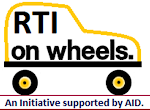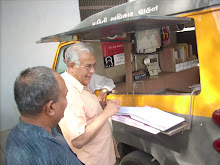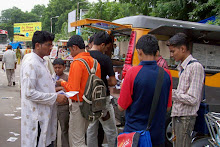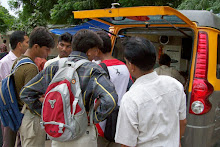India Today: New Delhi: Thursday,
30 July 2020.
Issues
related to demonetisation still continue to spring surprises. In the latest
instance, the Reserve Bank of India (RBI) has different vastly in its response
to a question about Indian currency held by people and the banks in Nepal.
In 2018,
the RBI said it was not aware of how much money in demonetised currencies was
being held by the Nepal Rastra Bank (NRB). However, in 2020, the RBI said the
NRB had informed the central bank as early as 2017 that the Nepali banks held
demonetized Indian currencies worth around Rs 8 crore. So what is the truth?
ssues
related to demonetisation still continue to spring surprises. In the latest
instance, the Reserve Bank of India (RBI) has different vastly in its response
to a question about Indian currency held by people and the banks in Nepal.
In 2018,
the RBI said it was not aware of how much money in demonetised currencies was
being held by the Nepal Rastra Bank (NRB). However, in 2020, the RBI said the
NRB had informed the central bank as early as 2017 that the Nepali banks held
demonetized Indian currencies worth around Rs 8 crore.
The RBI
took a vastly contrasting stand in response to two RTI petitions filed by India
Today.
On
November 8, 2016, the Modi government announced its decision to demonetise 500 rupee
and 1,000-rupee notes, which were worth 15.44 trillion. The idea was to deal a
blow to the counterfeit currency racket and black money.
On 29
May 2018, in response to our question on how much demonetised currency notes
are there in Nepal, the RBI said, "Information sought is not available
with us."
In the
same petition, we asked if the NRB has given its assessment of demonetised
currencies held in that country to the RBI and how much of these currency notes
have been converted into new currency notes by India.
In
response, the RBI said, "Information is exempt from disclosure under
Section 8 (1) & (f) of the RTI Act 2005."
Section
8 (1) relates to national security and exempts disclosure of information that
affects the unity and integrity of India, its security, strategic, scientific
or economic interests and relationship with foreign countries.
Section
8 (f) deals with the information received in confidence from a foreign
government.
In 2020,
we asked RBI to provide details of demonetised currency still being held in
Nepal and Bhutan.
In
response, the RBI on July 16 this year, said, “As informed by Nepal Rastra Bank
(NRB) on August 21, 2017, they had a total of Rs 7.8461 cr of SBNs [specified
banking notes] in their banking system and with the courts. Further, the NRB
had informed that Nepalese people were still holding SBNs, the amount of which
is not known. As regards Bhutan, the Information sought is not available with
us."
The
latest response of the RBI puts the focus back on its 2018 reply. Had the NRB
informed the RBI by August 21, 2017, that it had a total of Rs 7.8461 cr in
demonetised currencies, why the banking regulator said the information was “not
available” with it?
Secondly,
the RBI’s stand to take recourse to Section 8 (1) and (f) of the RTI Act to not
share information in 2017 still remains unexplained. Now that it has given out
that information, what forced the RBI to hold it back three years ago?
In its
annual report for 2017-18, the RBI said that out of Rs 15.41 lakh crore in
demonetised currencies of Rs 500 and Rs 1,000 that were in circulation at the
time of the note ban, notes worth Rs 15.31 lakh crore had returned to it.
That is,
according to the RBI, just Rs 10,720 crore of the junked currency did not
return to the banking system. It is not, however, yet clear whether this was
the same money that was -- and is still held in Nepal and Bhutan.
In our
latest RTI application, we had asked what happened to demonetised currencies
that returned to the banking system. The RBI said, “The Specified banknotes
(SBNs) were checked using sophisticated high-speed Currency Verification and
Processing System (CVPS) for accuracy and genuineness, and subsequently shredded
and briquetted through the Shredding and Briquetting system."














































































